Resources Efficient
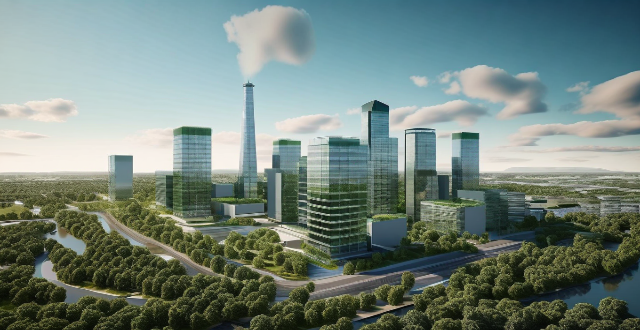
How do energy-efficient buildings contribute to sustainability ?
Energy-efficient buildings contribute to sustainability by reducing energy consumption, decreasing greenhouse gas emissions, and conserving natural resources. These buildings use less energy for heating, cooling, and lighting, resulting in lower energy bills and reduced carbon footprints. They also incorporate features like improved ventilation systems and water-saving technologies to improve air quality and conserve water resources. By using renewable materials and minimizing waste, these buildings help conserve natural resources and reduce landfill waste. Overall, energy-efficient buildings play a crucial role in achieving sustainability and protecting our planet for future generations.
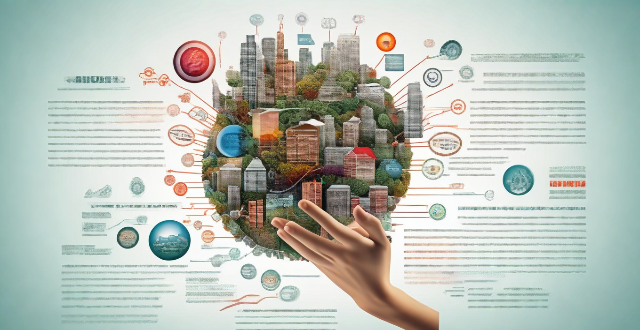
How does resource-efficient utilization contribute to sustainable development ?
Resource-efficient utilization is key to sustainable development, conserving resources, reducing waste, and promoting economic growth. It helps mitigate environmental impact, provides economic benefits, and enhances social well-being. As we face global challenges like climate change and resource scarcity, adopting resource-efficient practices is crucial for a sustainable future.
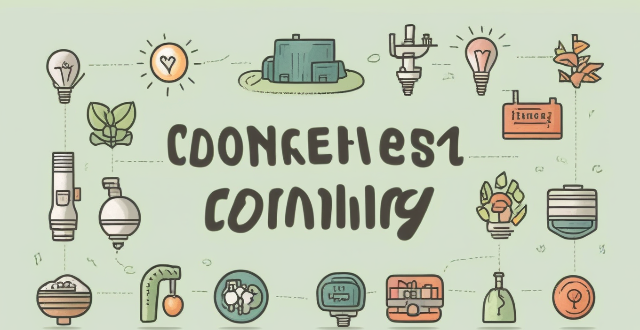
What is the relationship between energy-efficient appliances and overall energy savings ?
The text discusses the connection between energy-efficient appliances and overall energy savings, defining such appliances as those engineered to meet specific efficiency standards. These devices reduce direct energy consumption through lower power requirements and advanced technology, leading to long-term cost benefits and environmental advantages like reduced greenhouse gas emissions. To maximize savings, consumers should research and maintain these appliances properly and replace older models. The relationship underscores the importance of energy-efficient appliances in achieving energy savings for a more sustainable future.
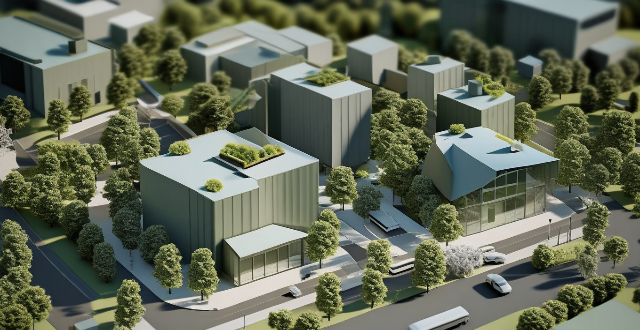
How do energy-efficient buildings reduce carbon footprint ?
Energy-efficient buildings are crucial for reducing carbon footprint by minimizing energy use and optimizing resources. They incorporate features like proper insulation, air tightness, advanced HVAC systems, renewable energy sources, and smart technology to reduce energy consumption, lower greenhouse gas emissions, and mitigate climate change impact. These structures offer benefits such as lower utility bills, increased comfort, reduced maintenance costs, and higher resale value. Energy-efficient buildings play a significant role in combating climate change and promoting a sustainable future.
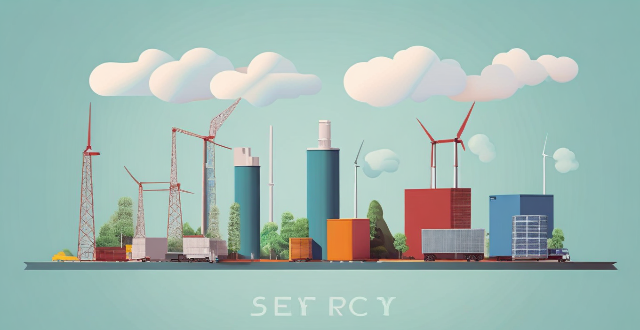
What impact do energy-efficient appliances have on reducing electricity bills ?
Energy-efficient appliances can significantly reduce electricity bills by using less energy and incorporating smart features. These appliances may have higher upfront costs, but the long-term cost savings often outweigh the initial investment. Additionally, energy-efficient appliances contribute to a smaller carbon footprint and conserve energy resources, promoting sustainability. Overall, these appliances offer financial and environmental benefits for conscious consumers.
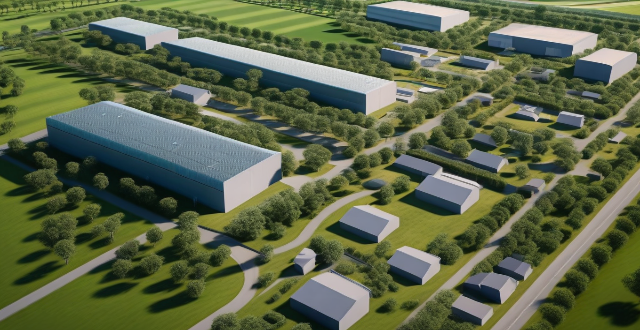
What are the benefits of energy-efficient lighting systems ?
Energy-efficient lighting systems offer multiple benefits, including reducing energy consumption and positively impacting the environment, economy, and overall well-being. They help lower greenhouse gas emissions and promote sustainability by lasting longer and using recyclable materials. Economically, these systems reduce energy costs and require fewer replacements over time, making them cost-effective. They also provide better visual comfort, reducing eye strain and increasing productivity, while producing less heat for a more comfortable environment. Upgrading to energy-efficient lighting systems contributes to a more sustainable future for all.

How can I make my home more energy-efficient ?
Making your home more energy-efficient can reduce your carbon footprint, save money on utility bills, and improve the comfort of your living space. To achieve this, consider proper insulation, improving window and door performance, optimizing heating and cooling systems, using energy-efficient appliances and electronics, and switching to energy-efficient lighting options. By implementing these strategies, you can enjoy the benefits of a more sustainable future.

What are some ways to organize my kitchen to make cooking more efficient ?
Organizing your kitchen can greatly enhance the cooking experience by making it more efficient and enjoyable. Here are some strategies to consider: 1. Zone Cooking Areas 2. Declutter Regularly 3. Smart Storage Solutions 4. Group Like Items Together 5. Maximize Fridge and Freezer Space 6. Keep a Clean Sink 7. Lighting and Safety

What are the best practices for managing water resources in agriculture ?
Proper management of water resources is crucial for sustainable agriculture, and there are several best practices that can help farmers conserve and use water efficiently. These include soil moisture monitoring, drip irrigation, mulching, rainwater harvesting, crop rotation and intercropping, efficient irrigation scheduling, integrated pest management, water-saving plants, and maintenance of irrigation systems. By following these practices, farmers can effectively manage their water resources while maintaining productivity and profitability in their agricultural operations.
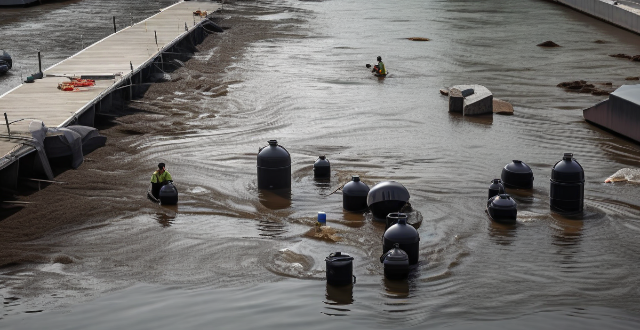
How can we ensure equitable access to water resources for all communities ?
Ensuring equitable access to water resources for all communities requires a multi-faceted approach, including investment in infrastructure, promotion of sustainable water management practices, implementation of policies and regulations, collaboration with local communities, and monitoring progress.

How do energy-efficient appliances help decrease carbon footprints ?
Energy-efficient appliances contribute to a smaller carbon footprint by reducing energy consumption, improving efficiency, and having a longer lifespan. Government incentives encourage the adoption of these eco-friendly options, leading to lower energy bills, increased comfort, environmental sustainability, reduced maintenance costs, and enhanced property value. Examples of energy-efficient appliances include refrigerators, washing machines, air conditioners, light bulbs, and water heaters. By choosing energy-efficient appliances, we can all contribute to a greener planet and a healthier future for generations to come.

Can energy-efficient lighting systems be used in commercial buildings as well as residential homes ?
Energy-efficient lighting systems offer significant energy savings, reduced maintenance costs, and environmental benefits. LED, CFL, and halogen lighting are common types of energy-efficient lighting systems that can be used in both commercial buildings and residential homes. By choosing an energy-efficient lighting system, users can contribute to a more sustainable future while also saving money on utility bills.
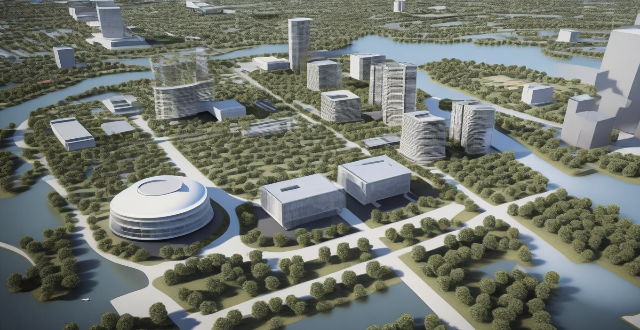
How do climate zones impact the design of energy-efficient buildings ?
Climate zones play a crucial role in the design of energy-efficient buildings, impacting heating and cooling needs, insulation and ventilation, orientation and shading, glazing and daylighting, and roofing and water management. By taking these factors into account, architects and engineers can create buildings that are both comfortable and energy-efficient regardless of their location within different climate zones.

What are the most common features of energy-efficient buildings ?
Energy-efficient buildings are designed to reduce energy consumption and minimize their impact on the environment. Some of the most common features of these buildings include insulation, energy-efficient windows, solar panels, energy-efficient lighting, high-efficiency HVAC systems, rainwater harvesting systems, green roofs and walls, energy monitoring systems, energy-efficient appliances, and natural ventilation. These features can significantly lower heating and cooling costs, reduce the demand for municipal water supplies, and improve indoor air quality.

Are there any government incentives for installing energy-efficient lighting systems ?
Governments worldwide are offering incentives to encourage the installation of energy-efficient lighting systems. These incentives include tax credits, rebates, grants, and subsidies aimed at reducing energy consumption, lowering greenhouse gas emissions, and promoting sustainable development. Types of government incentives for energy-efficient lighting systems include: 1. Tax Credits: Allow businesses and individuals to deduct a portion of the cost of installing energy-efficient lighting from their taxable income. 2. Rebates: Provide a direct payment to businesses or individuals who install energy-efficient lighting systems. 3. Grants: Financial awards given to support the installation of energy-efficient lighting systems without requiring any initial investment from the recipient. 4. Subsidies: Financial assistance provided by governments to make energy-efficient lighting systems more affordable through mechanisms like low-interest loans and interest rate subsidies. Benefits of energy-efficient lighting systems include significant energy savings, reduced environmental impact, and long-term cost savings. Despite the higher initial cost compared to traditional lighting systems, the reduced energy consumption and maintenance costs can offset the investment over time, making these systems a wise financial decision.
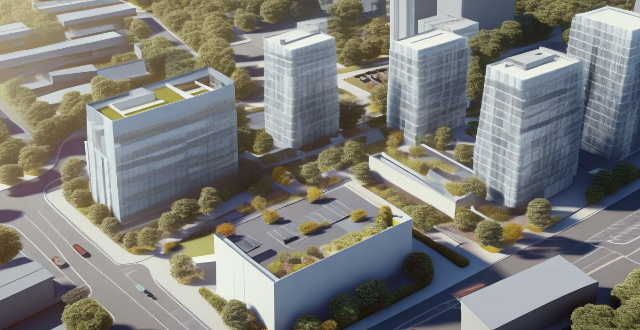
What is the relationship between energy-efficient buildings and indoor air quality ?
This article explores the relationship between energy-efficient buildings and indoor air quality, highlighting both positive and negative interactions. It defines energy efficiency and indoor air quality, outlines strategies for improving air quality in energy-efficient buildings, and concludes that it is possible to achieve both goals through careful design and maintenance practices.

What are the potential economic benefits of mining resources on other planets ?
The article discusses the potential economic benefits of mining resources on other planets, including increased availability of resources, creation of new jobs, advancements in technology, stimulation of economic growth, diversification of energy sources, and expansion of human habitat.
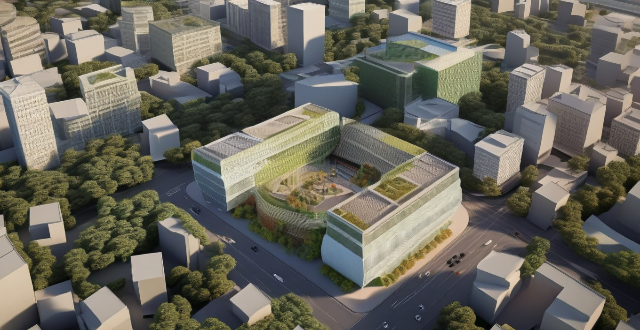
How do energy-efficient buildings contribute to reducing carbon emissions in the construction sector ?
Energy-efficient buildings are crucial in the construction sector for reducing carbon emissions, which contribute significantly to global warming and climate change. The importance of urgent action is emphasized by the IPCC's warning about the limited timeframe to limit global warming to 1.5°C above pre-industrial levels. Energy-efficient buildings can reduce energy consumption, lower energy bills, improve comfort and health, and contribute to long-term sustainability. Strategies for achieving energy efficiency include passive design strategies, high-performance building envelopes, advanced HVAC systems, retrofitting existing buildings with energy audits and renewable energy sources. Collective action from various stakeholders is necessary to make significant progress towards a sustainable future.

What are the key factors to consider when planning an energy-efficient building project ?
The text provides a summary of key factors that should be considered when planning an energy-efficient building project. These factors include site selection and orientation, building design and construction, and energy sources and consumption. The location and orientation of the building on the site can have a significant impact on its energy efficiency, as well as the design and construction of the building itself. Consideration should also be given to the sources of energy used by the building and how that energy is consumed. By considering these key factors during the planning stages of an energy-efficient building project, it is possible to create a building that is comfortable, functional, environmentally responsible, and economically sustainable over its lifetime.

How long does it take for an energy-efficient lighting system to pay for itself ?
The article discusses the financial benefits of investing in energy-efficient lighting systems and how long it takes for such an investment to pay off. It highlights that the payback period depends on several factors, including the cost of the system, energy savings achieved, usage patterns, and electricity rates. The article provides a step-by-step guide to calculate the payback period and offers an example calculation. Overall, the article emphasizes the long-term financial advantages of adopting energy-efficient lighting solutions.

How do energy-efficient lighting systems compare to traditional lighting systems in terms of performance and quality ?
Energy-efficient lighting systems outperform traditional lighting in luminous efficacy, lifespan, and color rendering index. They often offer dimming capabilities and instant on/off features. In terms of quality, energy-efficient options are more environmentally friendly, cost-effective over time, maintain consistent light quality, generate less heat, and provide a wider range of design options. Overall, energy-efficient lighting offers superior performance and quality compared to traditional systems.
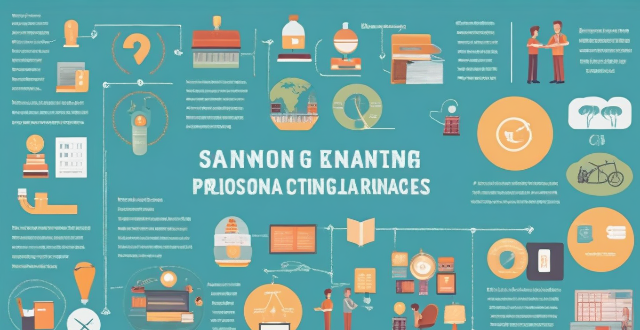
How can I find reliable online learning resources for my subject ?
When searching for online learning resources, it'sWhen searching for online learning resources, it's learning goals and then priorit it's crucial to first identify your learning goals and then prioritize credible sources like academic institutions and professional organizations. Evaluate content quality by checking author credentials and ensuring the information is up-to-date. Utilize reputable online learning platforms and join online communities for recommendations. Look for accredited courses and take advantage of trial periods to assess course quality before committing financially.

What resources are available to help women learn about wealth management ?
The text provides a summary of resources available to help women learn about wealth management. It mentions online courses and webinars, books, podcasts, and financial planners and advisors as some of the resources that can be used by women to gain knowledge and skills in wealth management. The resources are aimed at helping women take control of their finances and secure their financial future.

How can teachers effectively integrate multimedia resources into their innovative teaching methods ?
Integrating multimedia resources into teaching methods can greatly enhance the learning experience for students. Teachers should identify learning objectives, choose appropriate tools, create interactive lessons, encourage student participation, integrate technology in assessments, provide access to online resources, and continuously evaluate and update their methods. This approach ensures that teaching remains innovative and engaging for students.
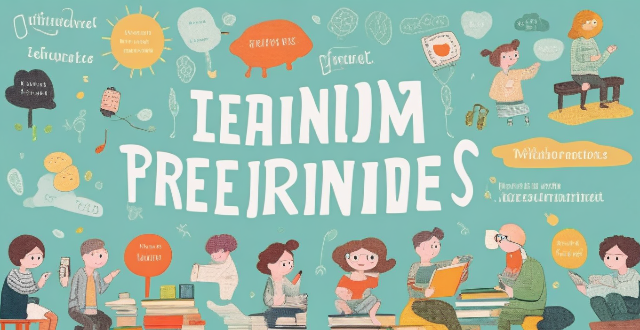
Are there any good online learning resources for language learning ?
Good online learning resources for language learning include Duolingo, Memrise, Rosetta Stone, Babbel, and Busuu. Each platform has its unique features and strengths, such as interactive lessons, memory techniques, immersive experiences, conversational focus, and community support. These resources can help learners achieve fluency in their target language by providing engaging and effective ways to learn vocabulary, grammar, pronunciation, and cultural insights.

How is climate change affecting global water resources ?
The impacts of climate change on global water resources include reduced availability due to melting snowpack and glaciers, more frequent droughts and floods, saltwater intrusion into coastal aquifers, and changes in runoff patterns. Water quality is also affected by warmer water temperatures leading to harmful algal blooms, acid rain from increased carbon dioxide levels, pollutant transport from heavy rainfall events, and eutrophication from nutrient loading. The distribution of water resources is impacted by increased water stress in arid regions, migration and displacement of people seeking reliable water sources, strain on infrastructure from extreme weather events, and disruption of aquatic ecosystems due to altered flow regimes. Addressing these challenges requires both mitigation efforts to reduce greenhouse gas emissions and adaptation measures to build resilience against the impacts of climate change on water resources.

What resources are available online for studying history ?
This article provides a comprehensive list of online resources for studying history, including digital libraries and archives, online courses and lectures, encyclopedias and dictionaries, virtual museums and exhibits, and forums and discussion groups. The resources offer access to historical documents, photographs, lectures, articles, artifacts, and discussions with fellow enthusiasts. The article emphasizes the importance of utilizing these resources to gain a deeper understanding of historical events and periods.
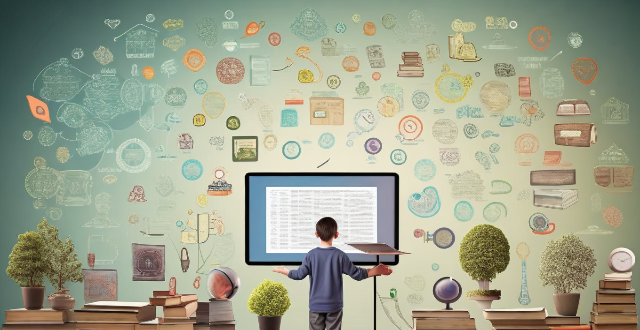
Which digital resources are most helpful for remote learning ?
Remote learning has become increasingly popular due to the COVID-19 pandemic. With the help of digital resources, students can continue their education from home. Here are some of the most helpful digital resources for remote learning: Online Learning Platforms, Video Conferencing Tools, Virtual Whiteboards, Online Libraries, Interactive Learning Tools, and Communication Tools. These resources provide students with access to high-quality educational content, interactive features, and collaborative tools that enhance the learning experience. By utilizing these resources, students can continue their education from home while staying engaged and motivated.
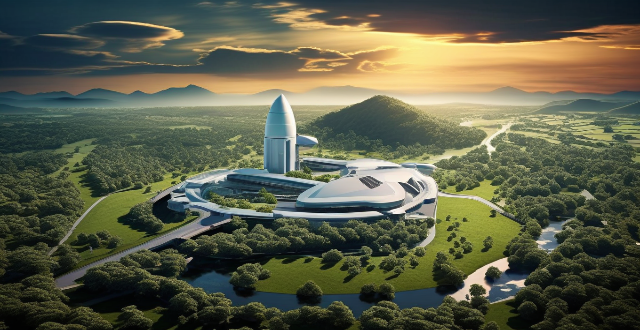
What is the future of space tourism and its implications on Earth's resources ?
The development of space tourism by private companies like SpaceX, Blue Origin, and Virgin Galactic may make it more accessible to the public in the future. However, it raises concerns about its environmental impact, economic considerations, ethical concerns, and long-term sustainability. It is crucial to consider these implications to ensure responsible use of Earth's resources while exploring space tourism.
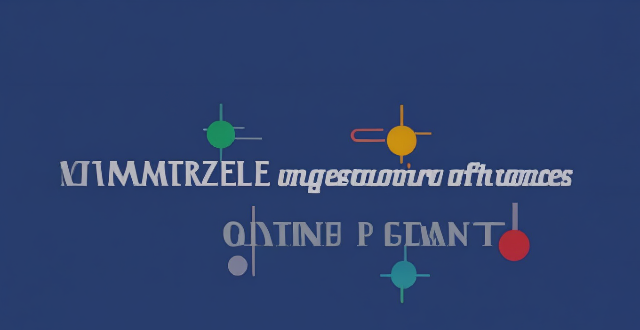
What are some reliable online learning resources for coding and programming ?
The text summarizes reliable online learning resources for coding and programming, including Coursera, edX, Udemy, Codecademy, Khan Academy, Pluralsight, LeetCode, and HackerRank. Each resource provides video lectures, interactive exercises, quizzes, assignments, and assessments to help learners improve their coding and programming skills. Some of the highlights of these resources include collaboration with prestigious universities, free access to most courses, personalized learning plans, and integration with popular development tools.